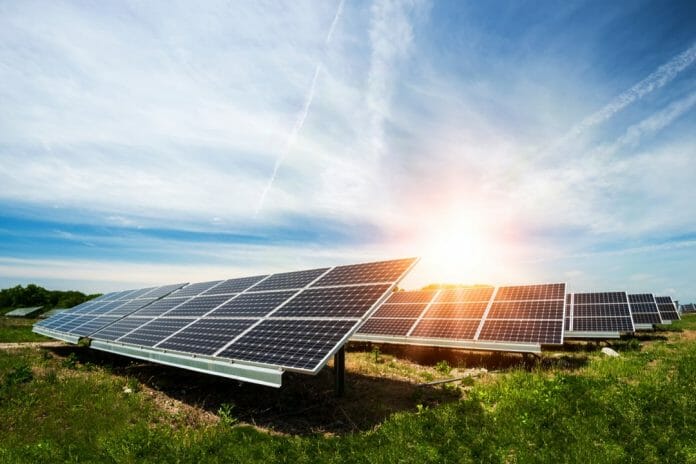The much-awaited NETR was finally unveiled, in which Phase 1 of the blueprint identified 10 flagship catalyst projects and
initiatives that are expected to generate more than RM25b investments, create 23,000 job opportunities and reduce greenhouse gas (GHG) emissions of over 10,000 Gg CO2e per year.
These projects are set to kickstart a change in the economics of renewable energy (RE) brought about by the two important policy decisions by the government i.e. i) lifting the export ban on renewable energy, and ii) setting up a central electricity exchange operated by a single-market aggregator. These would enable the rapid scaling up of RE production in line with the government’s revised target for RE to 70% (from 40% previously) of Malaysia’s total energy mix by 2050. The higher target is expected to create new economic opportunities in addition to attracting multinational companies, especially RE100 to operate in Malaysia.
According to the World Economic Forum’s Energy Transition Index 2023, Malaysia is ranked as the best country in Southeast Asia in terms of readiness to transition to RE. Malaysia is second among emerging countries and 35th globally. Centrally positioned within ASEAN, Malaysia’s inception of an electricity market system for cross-border energy trade could potentially establish the nation as a regional hub for renewable energy generation. The recent lifting of RE export ban will boost demand, especially from Singapore due to the higher average regulated household electricity tariff, resulting in better margin. Currently, Singapore has a target of up to 4GW of low-carbon electricity imports capacity by 2035. Furthermore, Malaysia is one of the key members in the Lao PDR-Thailand-Malaysia-Singapore Power integration Project (LTMS-PIP) which seeks to advance cross-border power trade among ASEAN members, and the ASEAN power grid (APG) initiative in the long run.
The establishment of the central electricity exchange operated by a single-market aggregator is aimed at ensuring a transparent pricing model that is ring-fenced as Malaysia transitions towards a more open and competitive utility sector. The single aggregator will also play the important role of matching RE demand to steady supply that involves multiple players, incentivising producers who may also be consumers, and ensuring efficient allocation so that all users, including RE100 and cross-border companies get GW levels of energy.
Solar To Play A Pivotal Role
The government has set an ambitious target of achieving 70% RE power capacity by 2050 (vs. 25% currently), from an initial target of 40% with an aspiration to achieve net zero by 2050. This is expected to involve a massive investment of RM637b in strengthening grid infrastructure, energy storage system (ESS), and grid system augmentation, among others. Based on projections in the Malaysia Renewable Energy Roadmap 2022−2035, at least 20GW of new RE requirements are needed from now until 2050 to achieve the 70% target, of which >90% is expected to come from solar – thus making solar the dominant driver of RE adoption in Malaysia. Solar’s key role is reaffirmed by the UEM’s 1GW project that was announced during the launch of Phase 1 NETR.
Opportunities abound for property developers. Showcasing its value propositions for The City of Elmina (6,500 acres
with 1,500 acres of industrial park and 35,000 landed homes upon completion in 2040), Sime Darby Property proposed
solar power generation and offtake at scale for use within the development. The government also aims to scale up the installation of rooftop solar renewable energy capacity (i.e. government buildings, residential, shopping malls and office buildings) due to limited land availability for large-scale solar projects. Currently, the Net Energy Metering (NEM) programme, designed for rooftop solar installations, faces certain constraints. Utilising rooftops for solar installations in property development projects that deploy the self-contained system particularly in townships, could expand the solar energy market significantly. This is highly possible as there is no upfront cost involved from the houseowners while earning from the lease payment. Malaysia currently has 269 GW of solar PV potential, with 6% from rooftops, 78% from ground installations, and the remaining 16% from floating solar installations.
Hydrogen and CCS
Other possible RE solutions include hydrogen, Rafizi sees the development of hydrogen capabilities as an opportunity for Malaysia to take the lead in the field of alternative fuel. Last month, Sarawak Premier Tan Sri Abang Johari Tun Openg said the final investment decision on H2biscus Train project is expected to be made in the first quarter of 2024 while the decision on H2ornbill Train project in expected in 2Q25.
Alternatively, CCS can reduce CO2 in the atmosphere directly when it is captured and stored permanently in geological formations. According to the International Energy Agency, CCUS is projected to contribute to a reduction of up to 20
gigatonnes of CO2 in the years 2030−2050. In Malaysia, Petronas is developing its Kasawari Carbon Capture and
Sequestration (CCS) project, off the coast of Sarawak, about 200km from Bintulu.
Selected O&G players are expected to benefit from the implementation of CCS catalyst projects for Kasawari and Lang
Lebah high-CO2 gas fields gas fields by Petronas.









